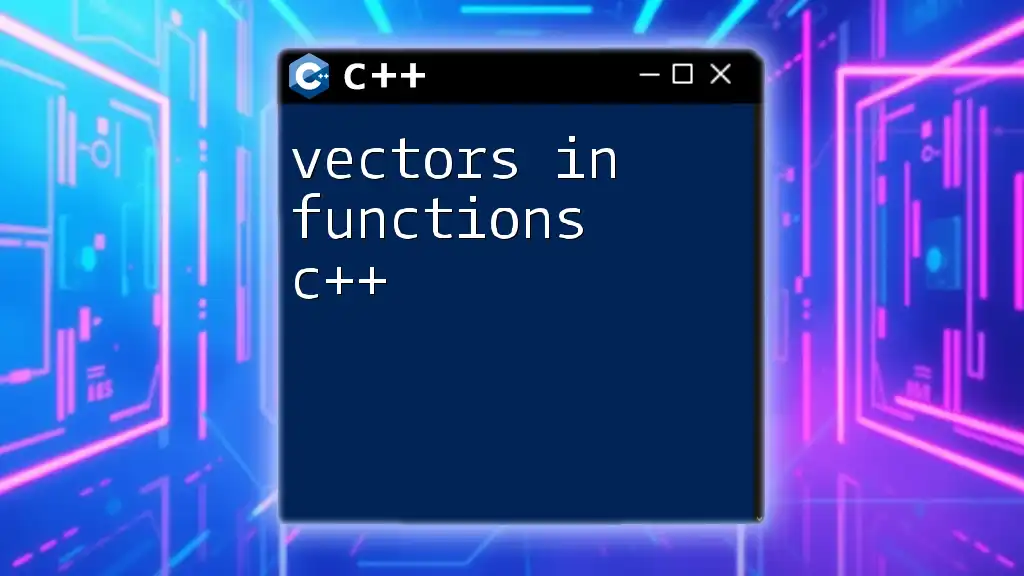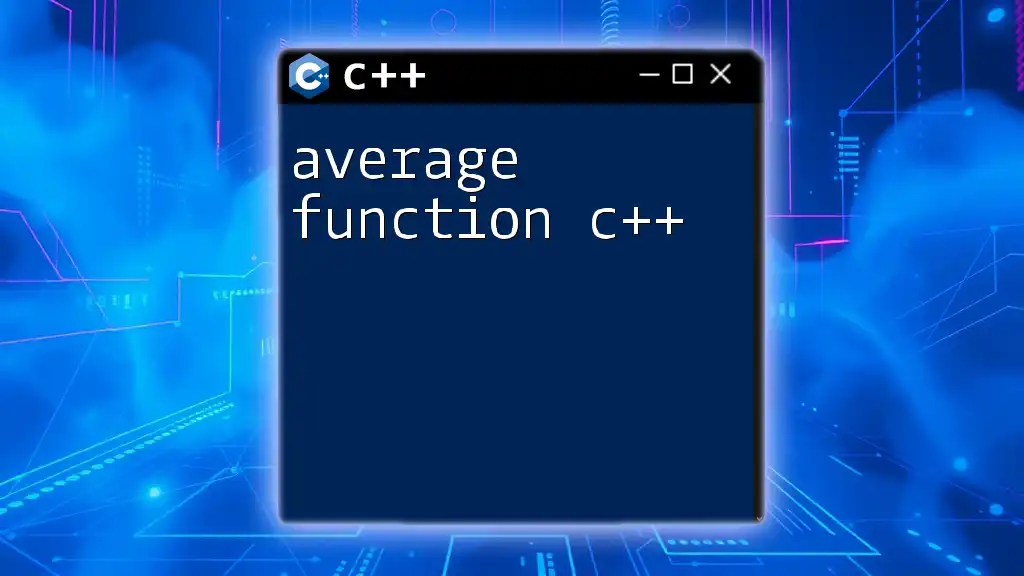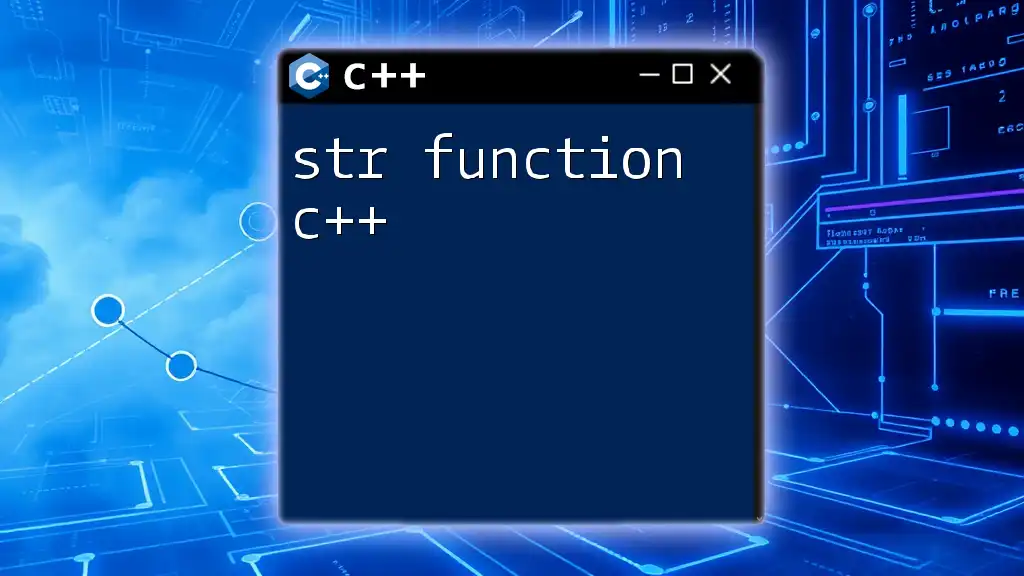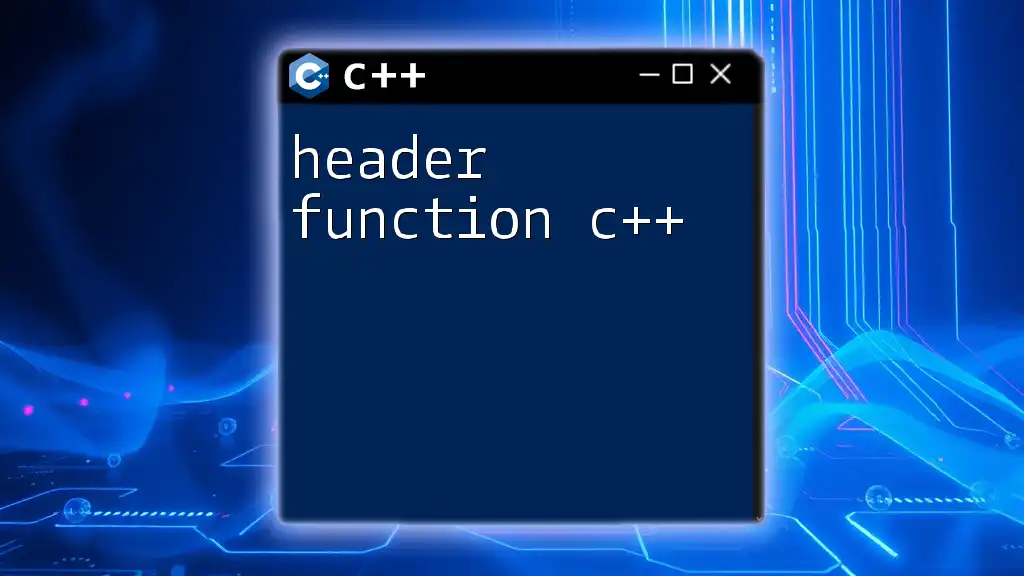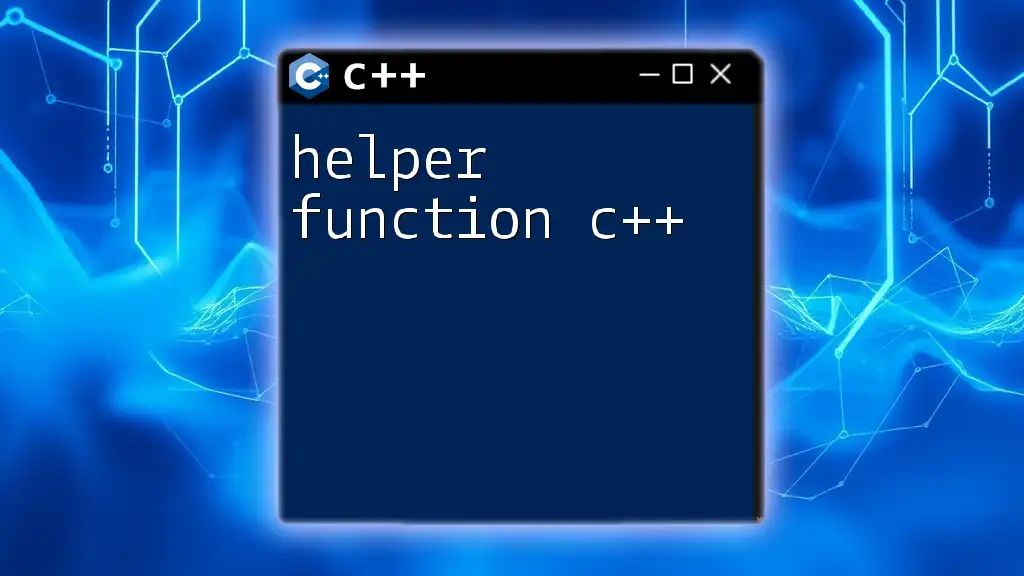In C++, vectors can be passed to functions to manipulate dynamic arrays efficiently, allowing for flexible memory management and easy data handling. Here’s a simple example:
#include <iostream>
#include <vector>
void printVector(const std::vector<int>& vec) {
for (int num : vec) {
std::cout << num << " ";
}
std::cout << std::endl;
}
int main() {
std::vector<int> myVector = {1, 2, 3, 4, 5};
printVector(myVector);
return 0;
}
Understanding Vectors in C++
What is a Vector?
A vector in C++ is a dynamic array that can grow or shrink in size, offering more flexibility compared to traditional arrays. Unlike arrays, which have a fixed size, vectors can adjust their capacity automatically, allowing developers to manage collections of data efficiently.
Advantages of using vectors over arrays include:
- Dynamic sizing: You don’t need to specify the size at compile time.
- Built-in methods: Vectors come with a rich set of methods that simplify various operations like insertion, deletion, and sorting.
- Automatic memory management: Vectors handle allocating and deallocating memory behind the scenes, reducing the chances of memory leaks.
Basic Operations on Vectors
To get started with vectors in C++, you need to be familiar with the essential operations:
-
Creating a vector:
std::vector<int> myVector; -
Adding elements: You can add elements to the end of a vector using:
myVector.push_back(value); -
Accessing elements: Elements can be accessed using an index:
int firstElement = myVector[0]; // Access the first element -
Removing elements: To remove the last element:
myVector.pop_back(); // Removes the last element
Initializing Vectors
Vectors can be initialized in several ways, providing flexibility based on the data available:
-
Using an initializer list:
std::vector<int> myVector = {1, 2, 3}; -
Using the constructor for a default size:
std::vector<int> myVector(size, value); // Creates a vector of 'size' with all elements initialized to 'value'

Pass-by-Value vs. Pass-by-Reference
What is Pass-by-Value?
When you pass a vector to a function by value, a copy of the vector is made. This means that any modifications to the vector inside the function do not affect the original vector. For example:
void passByValue(std::vector<int> v) {
v.push_back(4); // Modifies the copy; original stays the same
}
What is Pass-by-Reference?
Passing a vector by reference allows the function to work with the original vector directly, rather than a copy. This can improve performance, especially with larger vectors, and allows modifications to be retained after the function execution. For example:
void passByReference(std::vector<int>& v) {
v.push_back(4); // Modifies the original vector
}
This method is generally preferred when the function needs to modify the vector or when passing large vectors to avoid unnecessary copies.
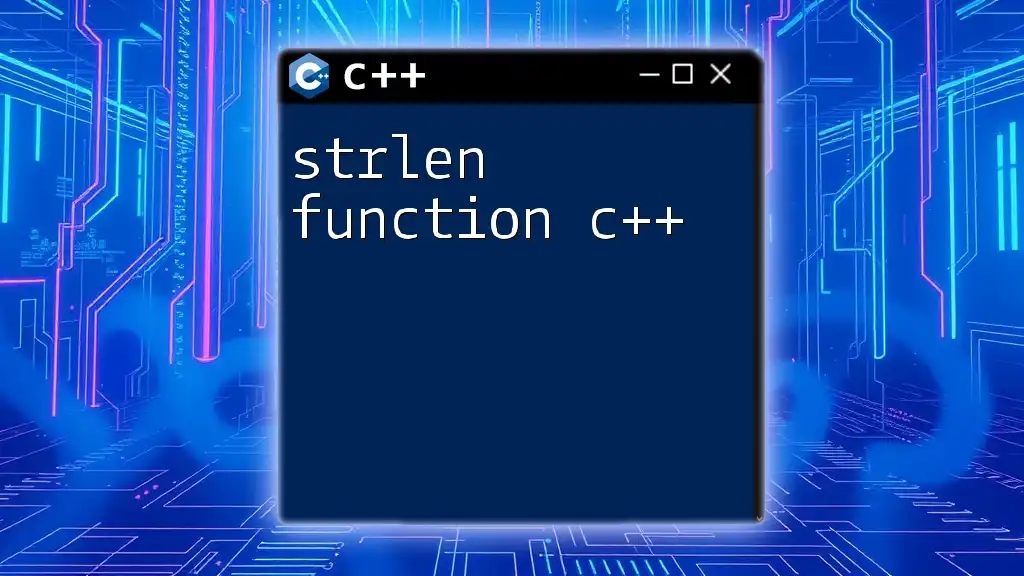
Functions that Return Vectors
Creating Functions that Return a Vector
In C++, you can create functions that return vectors. This is useful for building functions that generate collections of data. For instance:
std::vector<int> createVector() {
std::vector<int> temp = {1, 2, 3};
return temp; // Return by value
}
When to Return Vectors
Returning vectors can be beneficial when you need to generate or process data dynamically. However, it’s crucial to consider performance; with modern compilers, return value optimization often minimizes the overhead of returning objects like vectors.

Using Vectors in Function Overloading
What is Function Overloading?
Function overloading allows you to define multiple functions with the same name but different parameters. This can be particularly useful when working with vectors. For example:
void processVector(std::vector<int> v);
void processVector(std::vector<double> v);
Special Considerations for Overloaded Functions
When overloaded functions are called, the compiler determines which version to execute based on the argument types. To ensure clarity, consider using template functions for generic programming that can operate on any data type vector:
template <typename T>
void processVector(std::vector<T> v) {
// Process vector of type T
}

Practical Examples
Example 1: Summing Elements in a Vector
Here’s a function that calculates the sum of elements in a vector:
int sumVector(const std::vector<int>& v) {
int sum = 0;
for (int val : v) {
sum += val;
}
return sum;
}
Example 2: Finding Maximum in a Vector
To find the maximum value in a vector, you can use the `std::max_element` function from the `<algorithm>` header:
int findMax(const std::vector<int>& v) {
return *std::max_element(v.begin(), v.end());
}
Example 3: Filtering Elements
You can create functions to filter data within a vector. For example, here’s how to filter out even numbers:
std::vector<int> filterEvens(const std::vector<int>& v) {
std::vector<int> evens;
for (int val : v) {
if (val % 2 == 0) {
evens.push_back(val);
}
}
return evens;
}

Common Mistakes and Troubleshooting
Not Using `&` for Large Vectors
One common error when passing vectors to functions is forgetting to use a reference, resulting in inefficient copying of potentially large data. Always use:
void myFunction(const std::vector<int>& v);
Forgetting to Include Necessary Headers
When working with vectors, ensure you include the appropriate headers at the beginning of your code:
#include <vector>
#include <algorithm> // for std::max_element
Vector Capacity and Resize Issues
Be aware of vector capacity when adding elements. Avoid unnecessary resizing by pre-allocating capacity if you know the size in advance:
std::vector<int> myVector;
myVector.reserve(100); // Reserve space for 100 elements
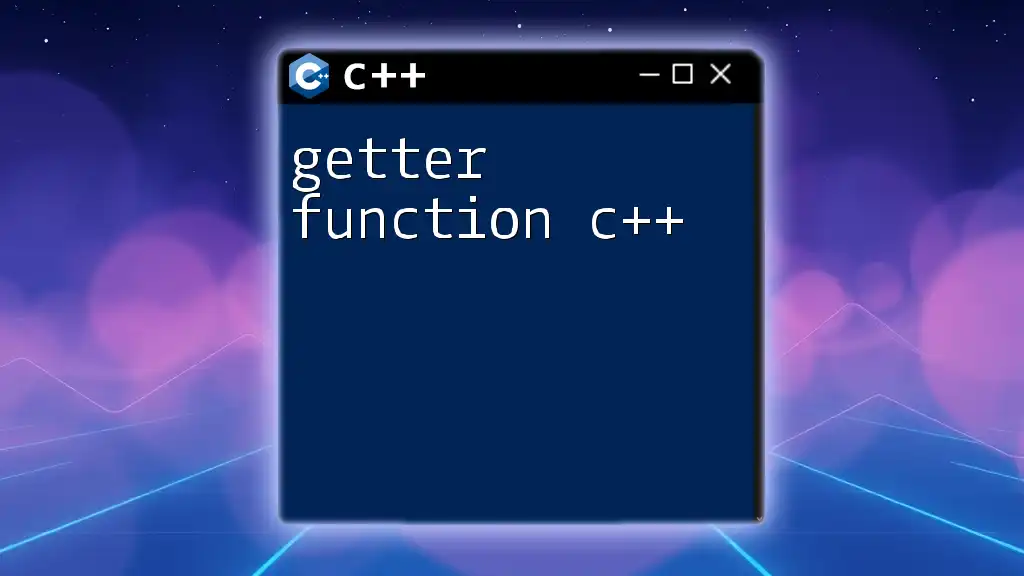
Conclusion
Vectors in functions provide a powerful way to utilize dynamic data structures in C++. Understanding how to use pass-by-value and pass-by-reference, alongside creating and returning vectors, greatly enhances your programming capabilities in C++.
Using the examples and practices outlined above, you can harness the true potential of vectors in your C++ projects, making them both efficient and easier to use. Embrace these tools and techniques to elevate your coding skills and streamline your data management!

